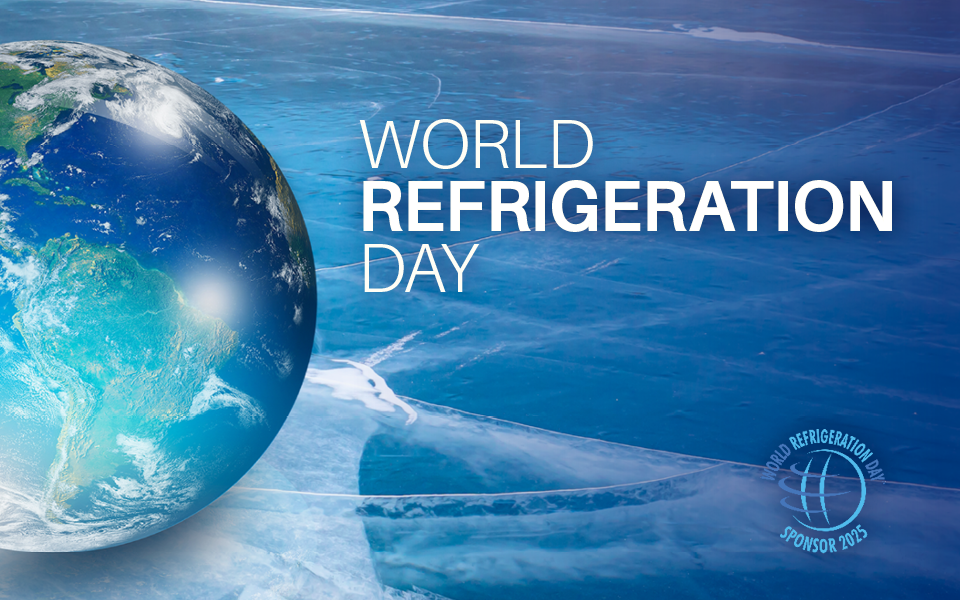*On June 1, 2023 Emerson’s Climate Technologies business became a new standalone company – Copeland. Though our name has changed, we are building on more than a century of HVACR innovation and industry leadership, and Copeland continues to offer the same products, industry stewardship, and learning opportunities you’ve grown to trust. Information found on this webpage posted before June 1, 2023 may contain our old name or branding, but you can be at ease knowing it was created with the knowledge and expertise of Copeland.
The state of California and the California Air Resources Board (CARB) have taken steps to phase down hydrofluorocarbons (HFC) beginning in 2019. I recently presented this topic during Emerson’s January E360 Breakfast at the AHR Expo where I spoke about this and how it may influence refrigerant regulations in other states. Read Accelerate America’s article, “California Starts HFC Bans — with More to Come.”

As we had discussed in late 2018, the Environmental Protection Agency (EPA) indicated that in the wake of the vacating of SNAP Rule 20, it will no longer enforce HFC refrigerant delistings and has proposed to roll back further HFC-related regulations. This decision has a left a void in the regulatory landscape — one in which California and other U.S. Climate Alliance member states are vowing to fill.
In particular, many are looking to California to lead industry efforts on reducing high-GWP HFC refrigerants in commercial, industrial and residential refrigeration and AC applications. With the adoption of SNAP Rules 20 and 21 into state law, California appears to be embracing this role. As of Jan. 1, R-404A and R-507A are no longer permitted in new and retrofit supermarket central systems, remote condensing units, and low- and medium-temperature retrofit stand-alone units — all of which can be legally enforced in California under the authority of the California Cooling Act (Senate Bill 1013).
January 1 also marked the onset of bans for R-404A, R-507A, R-410A, R-134 and R-407A/C/F in new medium-temperature, stand-alone units with a compressor capacity of less than 2,200 BTU/hr and not containing a flooded evaporator. These actions mirror the now vacated EPA SNAP rules and are all part of an HFC phase-down schedule that will continue in California in the coming years.
The California Cooling Act also prohibits manufacturers from selling equipment or products that use banned HFCs manufactured after their respective prohibition dates. It’s important to understand this phase-down in the context of even larger and more ambitious state-wide environmental initiatives.
The California Air Resources Board plans to enact further restrictions on HFCs via its SLCP (Short-Lived Climate Pollutant) strategy, which was approved in March 2017. These actions are all intended to help California reduce HFC emissions 40 percent below the levels it recorded in 2013 by 2030, as stated in Senate Bill 1383 (aka the Super Pollutant Reduction Act).
CARB’s SLCP strategy is based on a multipronged approach in which they have proposed:
- Limiting the GWP of refrigerants used in new stationary air-conditioning equipment to below 750 starting in 2023
- Imposing prohibitions on refrigerants (more than 50 pounds) with a GWP of more than 150 for new stationary refrigeration beginning in 2022
- Calling for a blanket ban on all production, import, sales, distribution or entry into commerce of refrigerants with a GWP of 1,500 or more, effective in 2022, with possible exemptions for R-410A for use in AC and reclaimed refrigerant.
We anticipate CARB to announce a final regulation on these SLCP initiatives in December for AC and March 2020 for commercial refrigeration. In the meantime, we encourage stakeholders to engage CARB in one of the many public meetings they’re planning throughout 2019.
As other states watch closely to see how California’s pending environmental regulations take shape, we believe it’s important that our industry continues to push for consistency in our approaches. Dealing with state-by-state mandates on what’s acceptable and what’s not acceptable would only introduce unnecessary complexity. To see my comments on this matter, please read the full article here.

Celebrating World Refrigeration Day 2025
Electrical component considerations for A2L system safety Heating, ventilation, air conditioning...
A2L Refrigeration Overview — Systems, Safety and Servicing Considerations
*On June 1, 2023 Emerson’s Climate Technologies business became a new standalone company –...
Servicing the Next Generation of Lower-GWP Refrigerants
*On June 1, 2023 Emerson’s Climate Technologies business became a new standalone company –...
